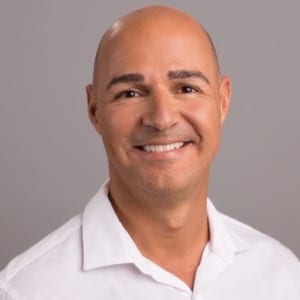What Day Is National Scoliosis Awareness Day? Explained
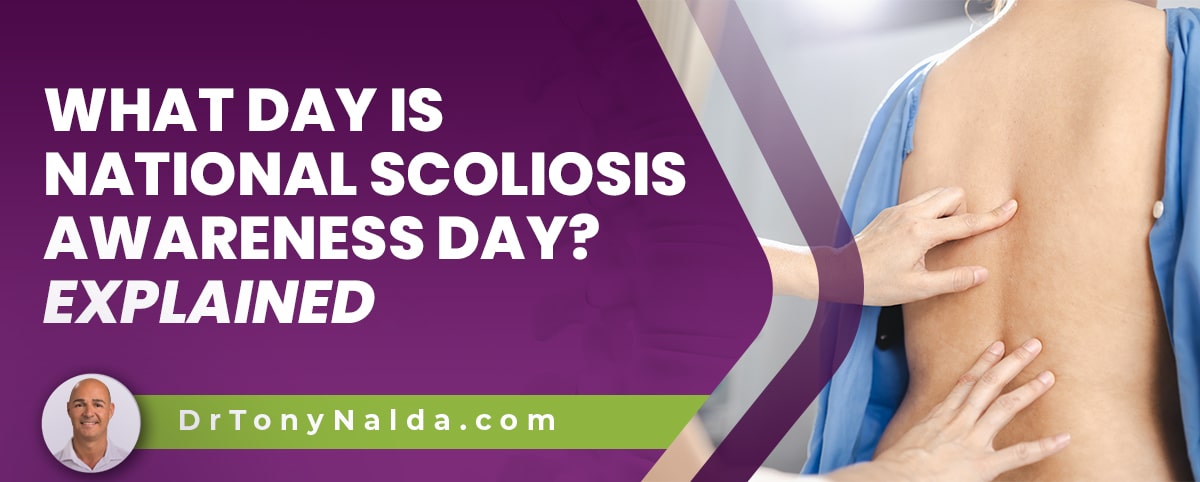
As a progressive condition, scoliosis needs to be treated proactively, and as it can range widely from mild scoliosis to moderate, severe and very severe scoliosis, the sooner treatment is started, the better. National scoliosis awareness month highlights the benefits associated with early detection.
June 26th is National Scoliosis Awareness Day with June declared National Scoliosis Awareness Month; those wanting to show support can wear a green ribbon. The goal of Scoliosis Awareness Day is to promote awareness about the importance of early detection and intervention.
As it's the progressive nature of scoliosis that can complicate the treatment process, let's start with the dangers of progression.
Table of Contents
Scoliosis is a Progressive Condition
Current estimates have close to seven million people living with scoliosis in the United States alone, so imagine the staggering number of people worldwide.
And as the leading spinal condition among school aged children, it warrants awareness.
Progressive conditions have it in their nature to get worse over time, which is why timely intervention can be so beneficial.
Scoliosis causes the spine to bend unnaturally to the side and rotate, and if a condition is progressing, the size and twist of the spine's unnatural curve will get worse over time.
As scoliosis progresses, the condition's effects are also becoming more noticeable, and in children, the main symptoms of scoliosis involve changes to posture, and in adults for whom scoliosis is compressive, pain is the main symptom.
Progressive conditions are more complex to treat because their nature has to be counteracted, and as an incurable condition, scoliosis treatment is about how best to manage an ongoing condition.
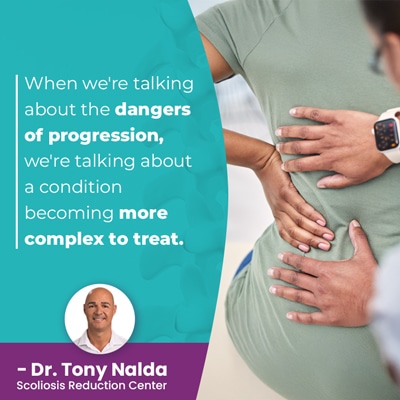 When we're talking about the dangers of progression, we're talking about a condition becoming more complex to treat.
When we're talking about the dangers of progression, we're talking about a condition becoming more complex to treat.
So let's touch on the main ways in which progression makes scoliosis more difficult to treat without invasive surgery.
Increasing Spinal Rigidity
As the size of a scoliotic curve gets larger, the spine is becoming more rigid, and this makes it less responsive to treatment.
Conservative non-surgical scoliosis treatment is chiropractic-centered; as a structural spinal condition, a primary focus of treatment is on addressing the structural abnormality within the spine, and the more rigid it is, the less malleable it is.
Chiropractic centered treatment involves identifying the curve's most-tilted vertebrae and manually adjusting them back into a healthier alignment with the rest of the spine: restoring as much of the spine's healthy curves as possible.
So in cases where significant progression has already occurred, some preparatory work can be needed to restore a baseline level of spinal flexibility prior to starting the course of treatment.
Condition Effects
Another result of progression that makes scoliosis more complex to treat is that its effects become more severe and difficult to improve or reverse.
As mentioned, the main signs of scoliosis in children are postural changes:
- Head appearing uncentered over the torso
- A prominent lean to one side
- Uneven shoulders
- Uneven shoulder blades
- Development of a rib cage arch
- Uneven hips
- Arms and legs that appear to hang at different lengths
As these postural changes become more overt with progression, they are more noticeable, and the longer they are established, the more difficult it can be to improve posture.
In most cases of progressive conditions, it's more effective to proactively work towards preventing progression and increasing effects than it is to attempt to reverse changes once they've occurred.
In some cases of adolescent idiopathic scoliosis, teenagers are known to conceal these changes and body compensations can also hide changes to movement.
As scoliosis progresses, changes to gait, balance, and coordination can also occur, and these changes also need to be addressed with treatment or they will continue to get worse.
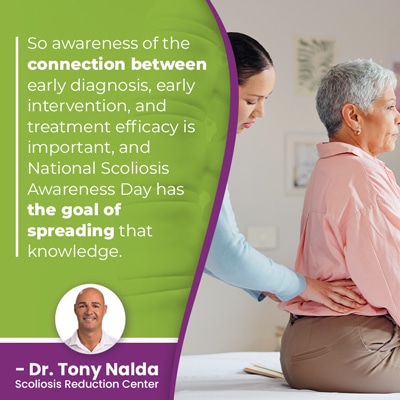 So awareness of the connection between early diagnosis, early intervention, and treatment efficacy is important, and National Scoliosis Awareness Day has the goal of spreading that knowledge.
So awareness of the connection between early diagnosis, early intervention, and treatment efficacy is important, and National Scoliosis Awareness Day has the goal of spreading that knowledge.
The best way to reach early detection is by also understanding the importance of scoliosis screening and risk factors.
Scoliosis Screening
Scoliosis screening means looking for early signs of scoliosis developing in the hopes of reaching early detection.
Scoliosis affects millions and all ages, but children are the most commonly diagnosed, and adolescent idiopathic scoliosis is the most common type of scoliosis overall.
As we know it's growth that triggers progression, adolescents are also the age group most at risk for rapid progression due to the rapid and unpredictable nature of pubescent growth spurts.
So screening leads to more diagnoses because it starts looking for condition indicators early, and age, gender, and a family history are considered risk factors.
Adolescents between the ages of 10 and reaching skeletal maturity are the most often diagnosed so should be screened regularly.
Scoliosis that develops in females is far more likely to continue progressing and require intervention than scoliosis affecting males of the same age, and it also develops earlier; puberty starts earlier in females.
A family history is considered a risk factor because if someone in the family has already been diagnosed, this increases the chances that another diagnosis is forthcoming; scoliosis is not genetic, however, but familial.
Families share a lot more than just their genes.
So particularly if these risk factors are in place, it's recommended that scoliosis screening should be started at a young age because there are a number of benefits associated with diagnosing scoliosis and stating treatment prior to a child's first significant pubescent growth spurt.
Mandatory scoliosis screening used to be conducted in schools across the United States, but that's not the case currently, and this shifts the onus of early detection onto the shoulders of parents, caregivers, and patients themselves.
Adams Forward Bend Test
When it comes to scoliosis screening, this involves a physical examination that includes taking a patient's medical and family history.
An Adams forward bend test is known as the gold standard in scoliosis screening and involves a patient standing in front of me and bending forward at the hips as if trying to touch their toes; in this position, the spine and any related asymmetries are highly visible.
So I'm looking for a visibly-curved spine and any related trunk asymmetries such as uneven shoulders and hips, which are often the earliest signs of scoliosis developing and progressing.
And when combined with the use of a ScolioMeter, the angle of trunk rotation can also be assessed.
If a screening examination shows indicators for scoliosis, this doesn't guarantee a diagnosis, but it does indicate the need for further testing in the form of a scoliosis X-ray.
Diagnosing Scoliosis
In order to diagnose scoliosis, an X-ray has to be performed to truly see what's happening in and around the spine.
An X-ray is needed to confirm the spine doesn't just bend unnaturally to the side, but also twists, and a minimum curve size is needed to be considered a true scoliosis: minimum Cobb angle measurement of at least 10 degrees.
A patient's Cobb angle also determines condition severity as scoliosis can range from mild to moderate, severe and very severe scoliosis, and the more severe a condition is, the more noticeable its effects are likely to be.
And when receiving a diagnosis, patients need to understand that as a progressive condition, where a scoliosis is at the time of diagnosis doesn't indicate that's where it will stay; only proactive treatment can work towards counteracting the condition's progressive nature, hence the benefit of early detection and intervention.
Conclusion
So National Scoliosis Awareness Month is June with National Scoliosis Awareness Day falling on June 26th, and a green ribbon can be worn to support and encourage awareness.
Scoliosis patients can face a number of challenges throughout their scoliosis journey, and each case is unique, but there is a direct link between early detection, intervention, and treatment success.
And for those wanting to address their scoliosis with a safer less-invasive treatment option than spinal fusion surgery, conservative non-surgical treatment is more effective the sooner it's started.
Basically, the sooner scoliosis is diagnosed and addressed, the fewer limits there are to what we can achieve with conservative treatment.
Conservative treatment options include customizing treatment plans and combining the power of chiropractic care, physical therapy, corrective bracing, and rehabilitation.
When treated proactively, scoliosis can be highly responsive, and the truth is many cases of scoliosis don't need invasive spinal surgery, particularly with early detection and intervention.
So on June 26th, take a moment to consider any children in your life, if they have any significant risk factors, and/or if they are exhibiting any of the condition's early signs.
For children at a higher risk of developing scoliosis, it's a good idea to have regular scoliosis screening exams conducted as part of their routine check ups and physicals.
Here at the Scoliosis Reduction Center®, every day is about spreading awareness, and on June 26th, we wear our green ribbons to show solidarity in supporting those struggling with a diagnosis or the challenges of living with scoliosis.
Dr. Tony Nalda
DOCTOR OF CHIROPRACTIC
After receiving an undergraduate degree in psychology and his Doctorate of Chiropractic from Life University, Dr. Nalda settled in Celebration, Florida and proceeded to build one of Central Florida’s most successful chiropractic clinics.
His experience with patients suffering from scoliosis, and the confusion and frustration they faced, led him to seek a specialty in scoliosis care. In 2006 he completed his Intensive Care Certification from CLEAR Institute, a leading scoliosis educational and certification center.
About Dr. Tony Nalda
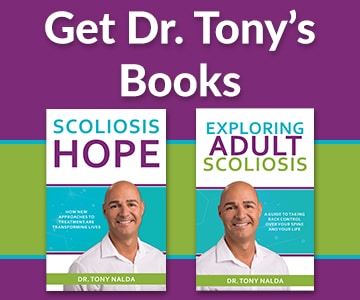 Ready to explore scoliosis treatment? Contact Us Now
Ready to explore scoliosis treatment? Contact Us Now
